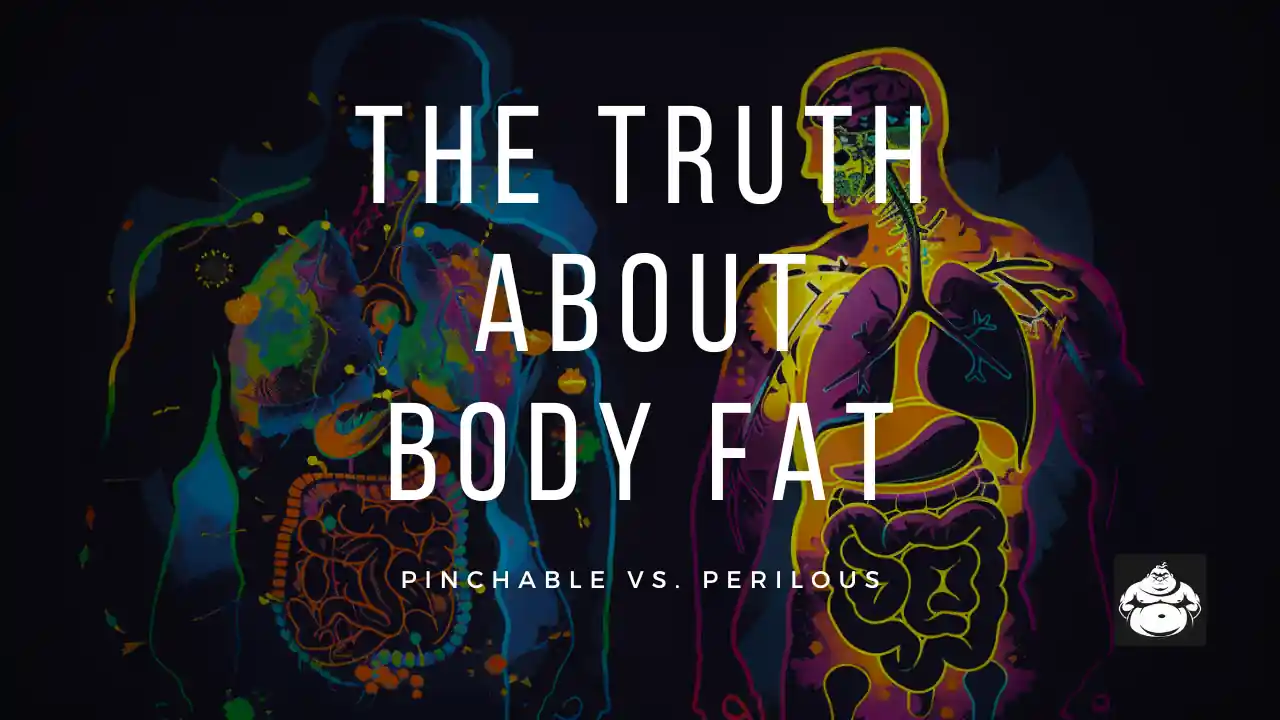The Hidden Danger in Your Belly: Why All Fat Isn't Created Equal
Subcutaneous and visceral fat impact your health differently; discover the surprising factors influencing these types and how to manage them effectively.

When you think about body fat, it's important to recognize that not all fat is created equal. Subcutaneous fat, which you can pinch under your skin, differs greatly from visceral fat, hidden deep in your abdomen and linked to serious health risks.
Understanding these differences isn't just academic; it can shape your approach to health and wellness. So, what factors contribute to the accumulation of visceral fat, and how can you effectively manage your body fat? The answers might surprise you as we explore the implications of these fat types on your overall health.
Subcutaneous vs. Visceral Fat: Know the Difference
Understanding the different types of body fat is crucial for recognizing their effects on your health and well-being.
You have subcutaneous fat, which lies just beneath your skin and can be pinched, and visceral fat, which is stored deeper in the abdominal cavity around essential organs.
While both types can pose health risks when in excess, subcutaneous fat is generally less dangerous. It plays important roles like energy storage and temperature regulation.
Conversely, visceral fat is regarded as 'active fat' and influences metabolic processes. High levels of visceral fat can lead to serious conditions, including type 2 diabetes and heart disease.
Waist circumference measurements can help you evaluate your body fat distribution and overall health.
The Hidden Dangers of Visceral Fat
When you have excess visceral fat, it can lead to serious health risks that you mightn't realize.
This type of fat is strongly linked to metabolic syndrome, which includes high blood pressure and raised blood sugar levels, in addition to an increased chance of developing heart disease and certain cancers.
Understanding these risks is essential for managing your overall health and making informed lifestyle choices.
How Belly Fat Triggers Metabolic Chaos
Excess visceral fat greatly increases your risk of developing metabolic syndrome, a serious condition that can lead to a range of health issues, including heart disease and diabetes.
This type of abdominal fat contributes to insulin resistance, making it harder for your body to manage blood sugar levels, which can trigger type 2 diabetes.
Moreover, visceral fat releases inflammatory cytokines that promote chronic inflammation, further complicating metabolic syndrome.
The presence of excess body fat around your waist also raises your chances of cardiovascular diseases, like heart attacks and strokes.
Managing your visceral fat is vital, as its health risks can lead to a cluster of dangerous conditions that considerably affect your overall well-being.
The Cancer-Fat Connection You Can't Ignore
Visceral fat considerably raises the risk of developing certain cancers, especially breast and colon cancer, owing to its inflammatory properties and influence on hormone regulation.
Unlike subcutaneous fat, visceral fat can lead to a pro-inflammatory state, releasing harmful cytokines that enhance inflammation in your body.
If you have metabolic syndrome, which often involves high levels of visceral fat, your cancer risk increases further, as these metabolic disturbances promote tumor growth. A larger waist circumference is linked to prostate cancer risk in men.
Nevertheless, you can lower your cancer risk by making lifestyle changes, like improving your diet and increasing exercise. These actions help reduce visceral fat, decrease inflammation, and improve your overall metabolic health.
Visceral Fat: A Silent Threat to Your Heart
The presence of excess visceral fat greatly increases your risk of developing cardiovascular diseases, including heart disease and stroke, owing to its inflammatory effects and contribution to insulin resistance.
Unlike subcutaneous fat, visceral fat is metabolically active and releases harmful cytokines, which can raise your blood pressure and cholesterol levels.
If your waist circumference exceeds 94 cm for men or 80 cm for women, you're at a greater risk of hypertension and related complications.
Making lifestyle changes, such as adopting a balanced diet and engaging in regular exercise, can help reduce visceral fat.
What's Causing Your Visceral Fat Buildup?
High-sugar and high-fat diets lead to increased visceral fat accumulation in the abdominal cavity. Consuming excessive calories from these foods can result in more fat being stored around essential organs.
A sedentary lifestyle also plays a significant role; if you don't engage in regular physical activity, you're at a greater risk of accumulating visceral fat. Chronic stress is another factor, as it raises cortisol levels, which encourages fat storage.
Moreover, aging can slow your metabolism, making it easier for visceral fat to build up, especially in post-menopausal women. High alcohol intake is linked to increased abdominal fat, further contributing to health risks associated with visceral fat accumulation.
Reducing these factors can help manage visceral fat levels effectively.
Identifying Your Subcutaneous Fat
Understanding how to identify subcutaneous fat is important, especially since it often accumulates in areas like the abdomen, hips, and thighs, where it can be pinched.
You can measure body fat by checking your waist circumference; a measurement over 35 inches for women and 40 inches for men might indicate higher levels of subcutaneous fat, which can also correlate with visceral fat.
While subcutaneous fat serves as an energy reserve and is generally less harmful than visceral fat, excessive amounts can lead to health risks such as joint strain and mobility problems.
Your Action Plan to Melt Away Harmful Fat
Incorporating regular exercise and a balanced diet can effectively reduce body fat and enhance your overall health.
To specifically target visceral fat, aim for at least 30 minutes of aerobic activity most days. An exercise plan that includes high-intensity interval training (HIIT) can further boost your efforts.
Pair this with a healthy diet rich in lean proteins, whole grains, fruits, and vegetables while limiting trans fats and refined sugars.
Regular monitoring of waist measurement and body fat percentage helps track your progress.
Furthermore, don't underestimate stress management techniques like yoga or meditation, as they can lower cortisol levels, reducing health risks associated with visceral fat.
Your Toolkit for Effective Fat Management
When it comes to managing body fat, using the right resources can make a big difference.
You can access healthy lifestyle resources, join support programs, and even seek professional consultation services to guide your journey.
These alternatives provide valuable information and assistance to help you achieve your health goals effectively.
Healthy Lifestyle Resources
Accessing healthy lifestyle resources can greatly aid your journey in managing body fat effectively. These resources help you understand the difference between subcutaneous and visceral fat, and how to reduce health risks associated with excess body fat.
They emphasize the importance of a balanced diet and regular physical activity while providing personalized strategies customized to your needs.
Support Programs Available
Many effective support programs are available to help you manage body fat and adopt healthier lifestyle choices.
You can also find various local community programs that deliver structured support for weight loss and overall health improvement through lifestyle modifications customized to your needs.
Professional Consultation Services
How can professional consultation services enhance your fat management efforts and support your journey to better health? These services provide valuable resources customized to your needs, focusing on reducing visceral fat and minimizing health risks.
Here's how they can help you:
- Personalized plans for diet and exercise based on your unique situation
- Regular monitoring of body composition to track progress
- Guidance from healthcare providers to assess health risks and adjust plans
- Support for lifestyle changes through programs like the Better Health Coaching Service





